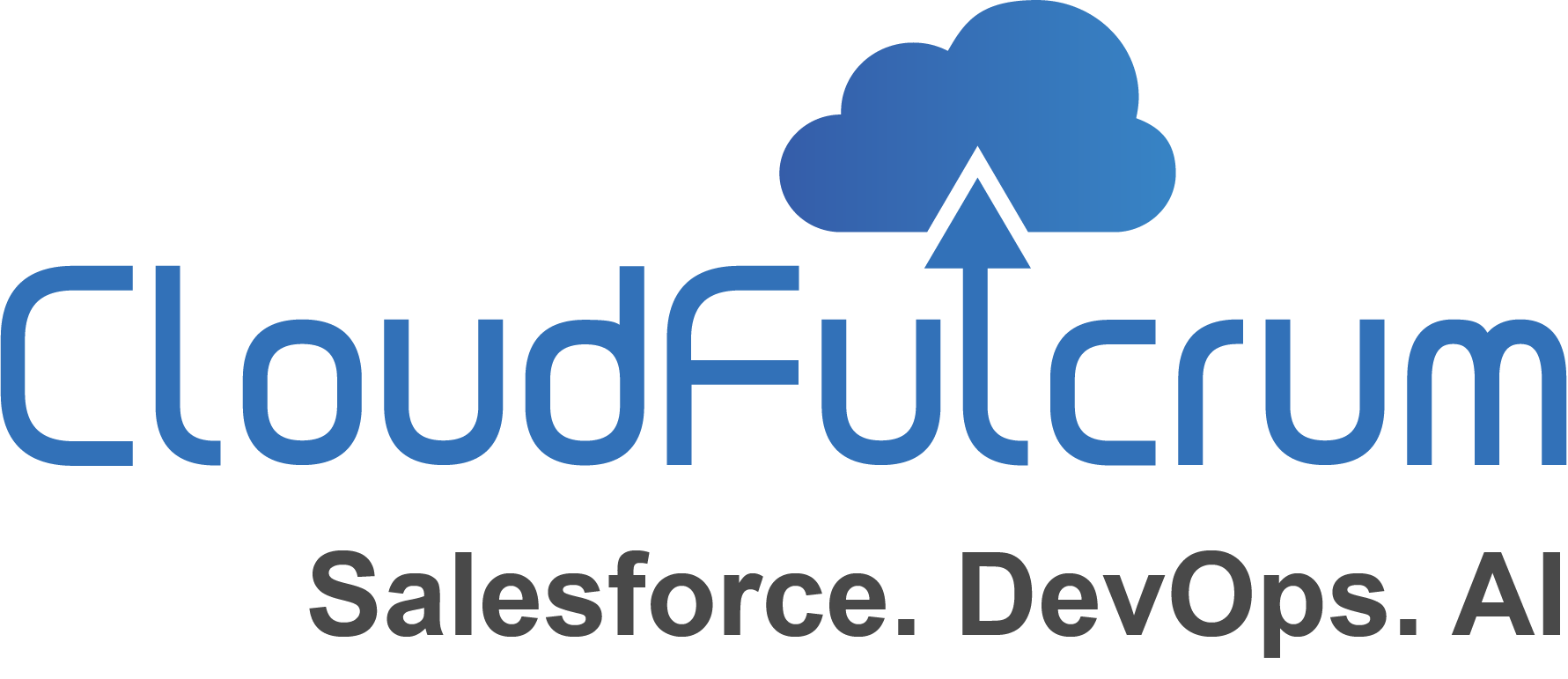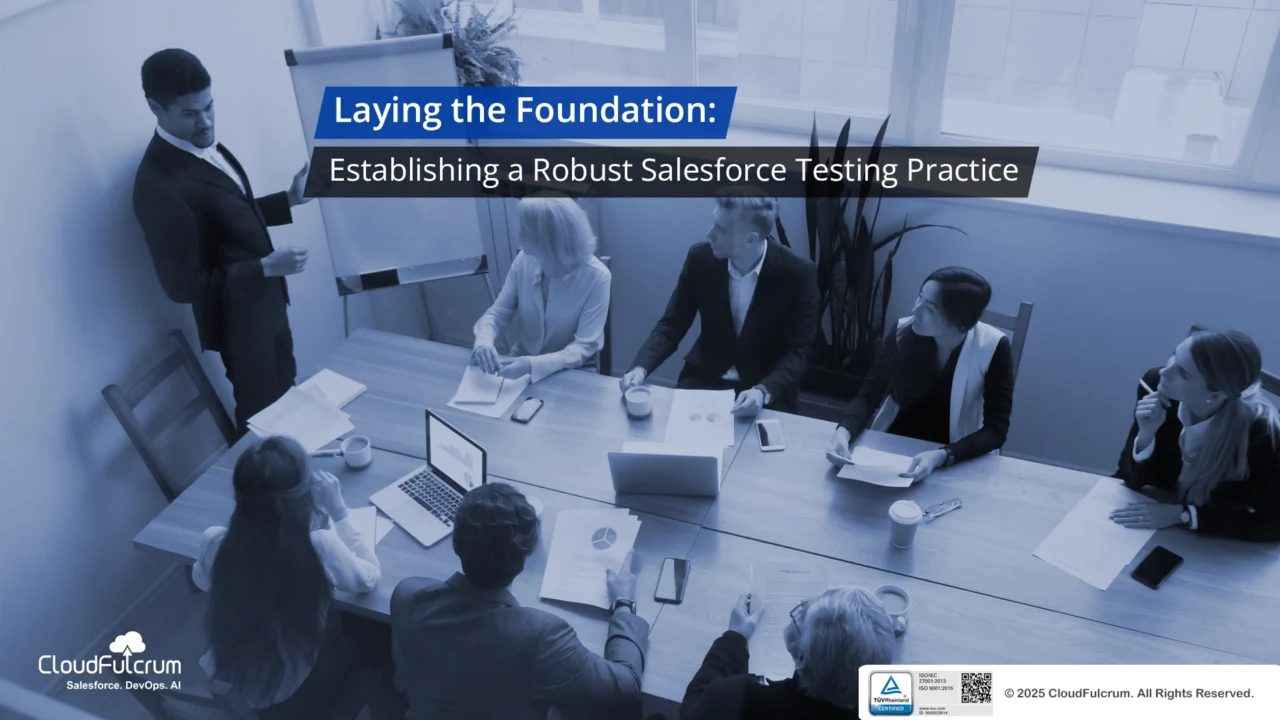In our previous post, “The Imperative of Quality: Why Structured Salesforce Testing is Non-Negotiable,” we dissected why a casual approach to Salesforce quality is no longer viable. We highlighted the platform’s growing complexity, the severe business risks of neglecting quality, and introduced the pivotal concept of structured testing as the essential first step towards maintaining a healthy and high-performing Salesforce ecosystem.
Now, we move from the “why” to the “how.” This second installment of our “Mastering Salesforce Quality: A Strategic Blueprint” series will guide you through the fundamental building blocks required to establish a robust and effective Salesforce testing practice. This isn’t just about finding bugs; it’s about building a systematic approach that ensures reliability, drives user adoption, and empowers your Salesforce investment to deliver consistent business value.
Defining the Pillars: Roles and Responsibilities in Salesforce QA
Effective testing isn’t a solo act; it’s a collaborative effort. In a Salesforce context, where declarative configuration meets custom code and complex integrations, a well-defined team structure with clear roles and responsibilities is paramount.
- QA Lead/Manager: This individual typically owns the overall testing strategy, defines processes, manages the QA team, prioritizes testing efforts, and reports on quality metrics to stakeholders. They are the architect of the testing practice, ensuring alignment with project goals and business objectives.
- Salesforce Test Engineers/QA Analysts: These are the hands-on practitioners responsible for designing, executing, and analyzing test cases. Their expertise spans both Salesforce functional knowledge (understanding standard objects, custom objects, flows, validation rules) and testing methodologies. They identify defects, document them meticulously, and work closely with developers and administrators for resolution.
- Salesforce Administrators/Configurators: Often overlooked in formal QA roles, these individuals are implicitly responsible for testing their own declarative changes (e.g., new fields, page layouts, simple flows). Encouraging them to write simple test scenarios for their configurations promotes early defect detection and a “shift-left” mindset.
- Salesforce Developers: Crucial for writing and maintaining Apex unit tests (a Salesforce deployment requirement) and ensuring their programmatic changes adhere to quality standards. They collaborate with test engineers on complex integration testing and bug fixes.
- Business Users/Subject Matter Experts (SMEs): Absolutely vital for User Acceptance Testing (UAT). These individuals provide invaluable insights into real-world business processes, ensuring that the Salesforce solution meets actual user needs and business requirements. Their involvement ensures the system is not just functionally correct, but also fit for purpose.
Collaboration is Key: Beyond individual roles, foster a culture of shared responsibility for quality. Daily stand-ups, regular syncs, and clear communication channels between all these stakeholders are critical for success.
The Spectrum of Quality: Essential Salesforce Test Types
A comprehensive testing practice for Salesforce isn’t a one-size-fits-all approach. It requires a strategic combination of different test types, each designed to uncover specific categories of defects at various stages of the development lifecycle.
- Unit Testing (Developer-Led):
- Purpose: To verify the smallest testable parts of an application (e.g., Apex classes, triggers, individual Lightning Web Components) in isolation.
- Salesforce Context: Mandatory for Apex code deployment to production (requiring at least 75% code coverage). While Salesforce provides Apex testing frameworks, the goal is not just coverage, but proving correctness.
- Best Practice: Developers should write comprehensive unit tests, considering positive, negative, and edge cases for their code.
- Functional Testing:
- Purpose: To verify that each specific feature or function of the Salesforce application behaves as per the defined requirements and specifications.
- Salesforce Context: Testing standard functionalities (e.g., Lead conversion, Opportunity stages), custom configurations (e.g., complex flows, validation rules, record types), and custom development (e.g., Apex logic accessed via UI).
- Best Practice: Cover main business processes, data entry, record updates, and basic reporting. This is often the starting point for structured manual test cases.
- Integration Testing:
- Purpose: To verify the interactions and data flow between different modules within Salesforce, or between Salesforce and external systems (ERPs, marketing automation, data warehouses).
- Salesforce Context: Crucial for any Salesforce implementation that connects to other applications via APIs, middleware, or AppExchange integrations. This validates data integrity and process continuity across systems.
- Best Practice: Focus on data mapping, error handling for failed integrations, and end-to-end process flows spanning multiple systems.
- Regression Testing:
- Purpose: To ensure that new changes, bug fixes, or Salesforce platform updates have not adversely affected existing functionalities.
- Salesforce Context: Absolutely critical due to Salesforce’s three annual releases and frequent internal deployments. Manual regression is extremely time-consuming and prone to human error, making it a prime candidate for eventual automation.
- Best Practice: Maintain a core suite of regression tests covering critical business processes and high-risk areas.
- User Acceptance Testing (UAT):
- Purpose: To validate that the Salesforce solution meets the real-world needs and expectations of the end-users and key business stakeholders.
- Salesforce Context: Performed by actual business users in a production-like environment (often a Full or Partial Copy sandbox). This is where the business “signs off” on the solution.
- Best Practice: Provide clear user stories, realistic test data, and direct support to business users during UAT. Document sign-offs.
- Performance Testing:
- Purpose: To assess the system’s responsiveness, stability, and scalability under various load conditions (e.g., concurrent users, data volume).
- Salesforce Context: While Salesforce handles infrastructure, custom code, complex queries, large data volumes, and inefficient configurations can severely impact performance. Essential for high-volume orgs.
- Best Practice: Focus on custom Apex, SOQL queries, complex reports, and highly used pages. Tools can simulate user load.
- Security Testing:
- Purpose: To identify vulnerabilities in the Salesforce application that could lead to unauthorized access, data breaches, or other security risks.
- Salesforce Context: Crucial due to the sensitive nature of data often stored in CRM. Includes testing profiles, permission sets, sharing rules, external sharing, and potential injection flaws in custom code (e.g., SOQL injection).
- Best Practice: Regular security audits, penetration testing, and adhering to Salesforce security best practices.
Balancing the Types: No single test type is sufficient. A robust practice strategically combines these types, prioritizing based on risk, complexity, and business impact.
Crafting the Process: A Salesforce Testing Lifecycle
Integrating testing seamlessly into your development workflow, particularly in Agile and DevOps environments, requires a defined lifecycle. This ensures testing is not an afterthought but an integral part of every iteration.
- Test Planning:
- What: Define the scope of testing for a release/sprint, identify test types needed, select environments, allocate resources, and define entry/exit criteria.
- Salesforce Context: Consider Salesforce release cycles, the complexity of new features, and the impact of existing integrations.
- Test Design:
- What: Create detailed test cases from requirements (user stories). This involves identifying preconditions, steps, expected results, and test data.
- Salesforce Context: Design test cases that account for declarative configurations, custom code logic, and integration points. Use clear, concise language for reproducibility.
- Test Environment Setup:
- What: Prepare appropriate sandboxes with necessary configurations and test data.
- Salesforce Context: This is a critical step. Distinguish between developer, developer pro, partial copy, and full copy sandboxes. Ensure data privacy (anonymization for sensitive data) and realistic data volumes.
- Test Execution:
- What: Run the designed test cases in the prepared environments.
- Salesforce Context: Execute tests systematically, whether manually or through automation. Log actual results diligently.
- Defect Management:
- What: Identify, log, prioritize, track, and manage defects through to resolution.
- Salesforce Context: Use a robust defect tracking system (e.g., Jira, Azure DevOps, Salesforce’s own platform for internal tracking) to capture all details (steps to reproduce, actual vs. expected, screenshots, environment).
- Test Reporting and Analysis:
- What: Communicate test progress, coverage, and quality status to stakeholders. Analyze results to identify trends and areas for improvement.
- Salesforce Context: Provide clear dashboards, status reports, and defect summaries. Use metrics like test case pass/fail rates, defect density, and regression suite health.
This iterative process ensures continuous feedback and improvement, moving quality upstream in your development pipeline.
The Foundation of Reality: A Smart Test Environment Strategy
For Salesforce, effective testing hinges on having the right environments. Sandboxes are your testing playgrounds, but not all sandboxes are created equal.
- Developer Sandboxes: Ideal for unit testing, small feature development, and individual configuration changes. They contain no production data.
- Developer Pro Sandboxes: Larger storage than Developer sandboxes, suitable for integration development, more complex feature builds, and small-scale functional testing.
- Partial Copy Sandboxes: Include a sample of your production data (configured via a Sandbox Template), making them excellent for functional testing, integration testing, and limited UAT where representative data is crucial. They refresh less frequently.
- Full Copy Sandboxes: Exact replicas of your production environment, including all data and metadata. Essential for performance testing, UAT, staging, and comprehensive regression cycles. They are resource-intensive and refresh very infrequently.
Best Practice: Plan your sandbox usage strategically. Each phase of testing (unit, functional, integration, UAT, performance) may require a different sandbox type to mimic production conditions effectively while managing refresh cycles and data needs.
Metrics that Matter: Measuring Salesforce Quality
“You can’t improve what you don’t measure.” For Salesforce testing, meaningful metrics go beyond just “bugs found.”
- Test Case Pass/Fail Rate: Basic health check of your test suite.
- Test Coverage: What percentage of your requirements/code is covered by tests?
- Defect Density: Number of defects per feature, module, or lines of code/config. Helps identify problematic areas.
- Defect Leakage: Number of defects found in production that should have been caught earlier. A high leakage indicates issues in your testing process.
- Regression Test Suite Health: How many regression tests pass consistently?
- Test Execution Time: How long does it take to run your key test cycles? (This metric becomes critical when discussing automation).
These metrics provide insights into the effectiveness of your testing practice and help identify areas for improvement.
The Next Frontier: Scaling and Accelerating Quality
Establishing a structured testing practice for Salesforce, with defined roles, diverse test types, and a clear process, is a monumental first step. It transforms chaotic ad-hoc checks into a reliable, repeatable system. However, as Salesforce environments continue to grow in complexity and pace, even the most meticulous manual structured testing eventually encounters its limits, particularly in the realm of regression and rapid feedback cycles.
This inherent challenge sets the stage for our next discussion. In “Beyond Clicks: Unlocking Salesforce Automation ROI,” we will explore how leveraging test automation can amplify the benefits of your structured testing practice, addressing the scalability and speed challenges that manual efforts alone cannot overcome. Get ready to discover how automation isn’t just a technological upgrade, but a powerful lever for accelerating development, reducing costs, and achieving unparalleled quality in your Salesforce deployments.

